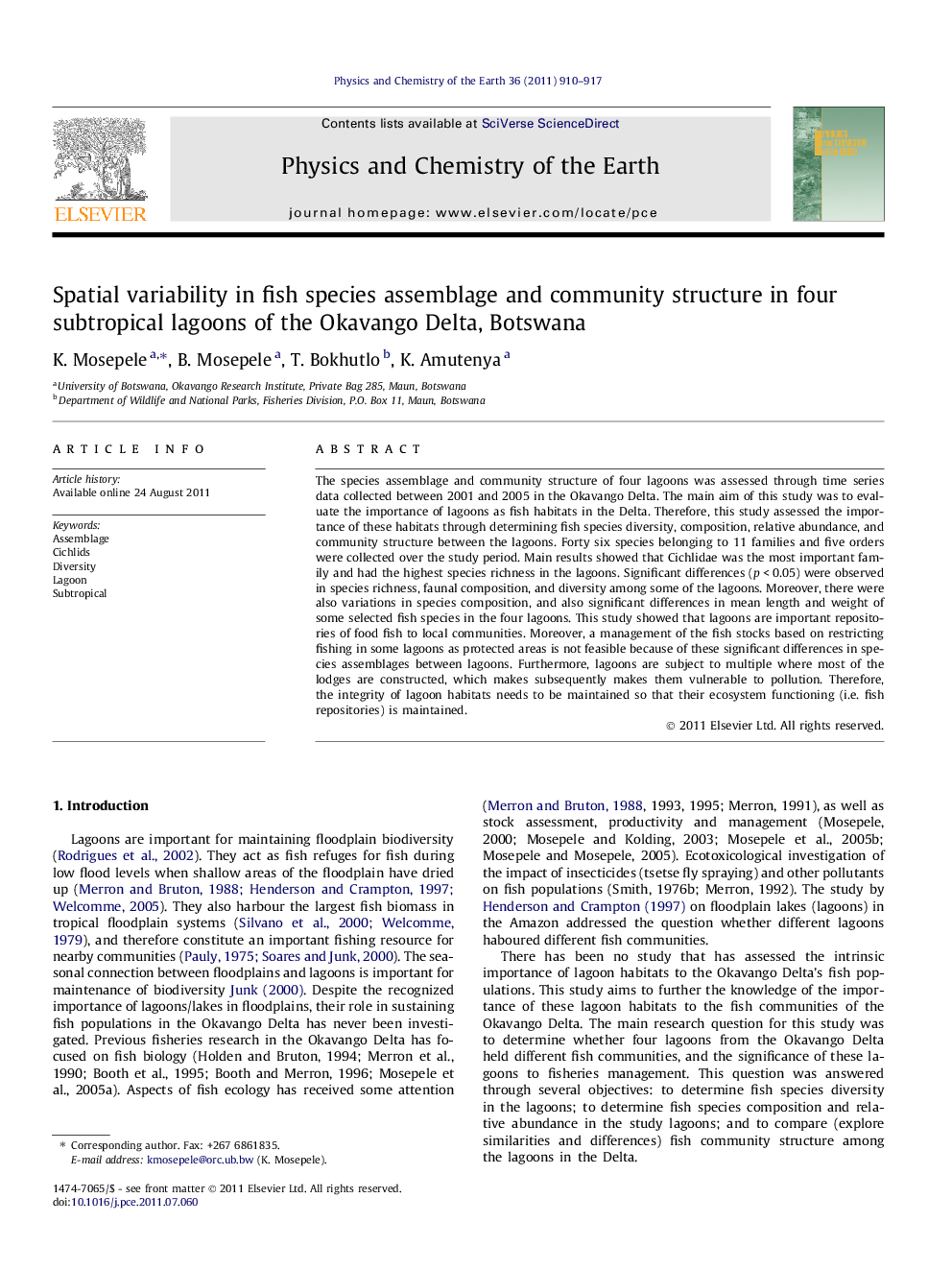| Article ID | Journal | Published Year | Pages | File Type |
|---|---|---|---|---|
| 4721308 | Physics and Chemistry of the Earth, Parts A/B/C | 2011 | 8 Pages |
The species assemblage and community structure of four lagoons was assessed through time series data collected between 2001 and 2005 in the Okavango Delta. The main aim of this study was to evaluate the importance of lagoons as fish habitats in the Delta. Therefore, this study assessed the importance of these habitats through determining fish species diversity, composition, relative abundance, and community structure between the lagoons. Forty six species belonging to 11 families and five orders were collected over the study period. Main results showed that Cichlidae was the most important family and had the highest species richness in the lagoons. Significant differences (p < 0.05) were observed in species richness, faunal composition, and diversity among some of the lagoons. Moreover, there were also variations in species composition, and also significant differences in mean length and weight of some selected fish species in the four lagoons. This study showed that lagoons are important repositories of food fish to local communities. Moreover, a management of the fish stocks based on restricting fishing in some lagoons as protected areas is not feasible because of these significant differences in species assemblages between lagoons. Furthermore, lagoons are subject to multiple where most of the lodges are constructed, which makes subsequently makes them vulnerable to pollution. Therefore, the integrity of lagoon habitats needs to be maintained so that their ecosystem functioning (i.e. fish repositories) is maintained.
► Lagoons maintain key food fish species. ► There are spatial variations in community structure. ► These suggest non-traditional management.
